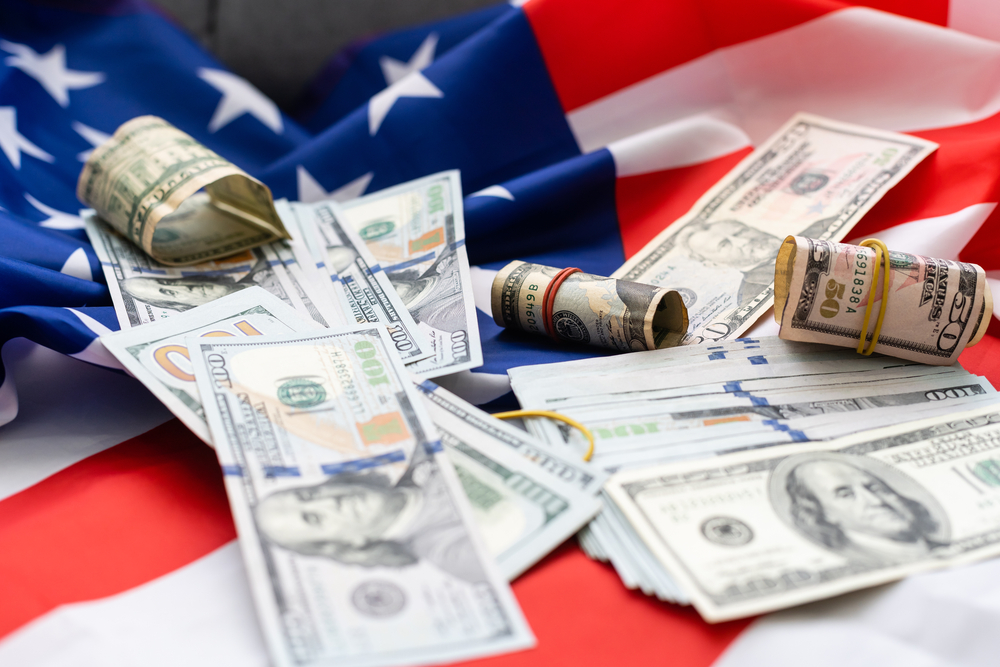Bank of America’s cash hold nearly doubled from the year-ago level amid turmoil in the banking sector, but banks ended up turning in relatively strong results.
Bank of America Corp. ended the second quarter with much larger cash holdings as it sold available-for-sale securities and shored up its balance sheet when the U.S. banking system was reeling from the domino effect of the collapse of Silicon Valley Bank.
With its eye on deposit withdrawals that shut down Silicon Valley Bank and Signature Bank in the first quarter, and the repercussions of the demise of First Republic Bank in the second quarter, Bank of America ended June 30 with $385.4 billion in cash and cash equivalents, up from $230.5 billion as of March 31 and about double the year-ago level of $178.3 billion.
Bank of America (BAC) did not see a huge rush of deposit outflows, as the banking system stabilized in May and June.
Bank of America’s second-quarter results instead turned out to be stronger than expected, along with profit updates from JPMorgan Chase & Co. (JPM), Morgan Stanley (MS), Citigroup Inc. (C) and Wells Fargo & Co. (WFC).
Goldman Sachs Group Inc. (GS) is on deck for earnings on Wednesday.
Stocks in all of these banks moved up handily on Tuesday, as Wall Street reacted positively not only on the second quarter, but on growing speculation of a soft landing for the economy and the prospect for bank earnings strength for the balance of 2023.
Bank ETFs also rose, amid sentiment that the banks collectively fared well despite a weakening economy and the regional banking crisis.
Other gainers included PNC Financial Services Group Inc. (PNC), which rose about 2% despite missing its revenue estimate.
Charles Schwab Corp. (SCHW) rallied to its biggest one-day gain in more than three years after it beat profit projections and said it gathered $52 billion in core net new assets in the quarter, bringing the year-to-date total to more than $180 billion.
While interest rates and competition for deposits challenged financial firms, the wealth-management business remained strong at Morgan Stanley and other banks, while the U.S. consumer continued to spend. This economic activity benefitted the banks.
“Overall, banks had a good quarter, benefiting from higher interest rates, although it wasn’t a blowout performance,” said David Donovan, executive vice president of financial services at Publicis Sapient. “JPMorgan, Wells Fargo, and Bank of America had stronger numbers due to higher net interest margins resulting from higher interest rates and large consumer and deposit bases, while Citigroup’s numbers were not as strong due to a smaller depositor base.”
Most banks experienced weaker capital markets and merger and acquisition activity, except for some growth at Bank of America.
“The consumer also held up well during the earnings season, with healthy loan growth and manageable credit card debt” despite depositors leaving for higher-paying options such as Apple Card and neo banks, Donovan said.
For its part, Bank of America moved assets into cash and then parked a larger amount of money at the U.S. Federal Reserve, with an average yield of 4.8%.
The bank’s average balance of interest-bearing deposits at the U.S. Federal Reserve increased to $385.14 billion during the second quarter, up from $230.3 billion at the end of the first quarter, and up from $178.3 billion in the year-ago period.
All told, the bank sold about $93 billion in securities and closed hedges in the first half of the year, with proceeds added to cash.
Asked by an analyst about the increase of cash and money parked at the Fed during the quarter, Bank of America CFO Alastair Borthwick said it was a continuation of the bank’s strategy laid out in the first quarter.
“At the end of last quarter, it was an interesting time for the industry,” Borthwick said. “And we felt like it was prudent to just build cash during a period like that. And so that’s what we did.”
Since then, the “environment is normalizing” and the bank’s cash levels will continue to come down over time, he said.
Meanwhile, Morgan Stanley got a boost from its fee-based revenue generated by its asset- and wealth-management business, which took up the slack from weak investment-banking revenue.
Morgan Stanley CFO Sharon Yeshaya said the bank saw an uptick in activity after Congress resolved the debt ceiling during the quarter, with increased potential activity in its adviser business for mergers and acquisitions.
“Our [M&A] backlog is building and we’re seeing it across various sectors,” Yeshaya said. “But it is fair to say that advisory will likely lag simply because you are dealing with a lagged announcement pipeline from the last six to nine months.”
Bank of America said consumer credit card growth remains strong, while commercial loans grew by 4%.
While loan growth has slowed, it remains ahead of Gross Domestic Product expansion.
“Commercial-client conversations remain solid as our clients seem to be waiting for some of the economic uncertainty to lift before borrowing further,” Bank of America CFO Borthwick said.
Donovan, executive vice president at Publicis Sapient, said the cost of depositors is expected to rise for banks, as they may have to offer higher interest rates to remain competitive.
“The risks for banks include whether consumers can sustain loan growth and whether they will continue to seek higher yields in alternative financial entities,” Donovan said.







